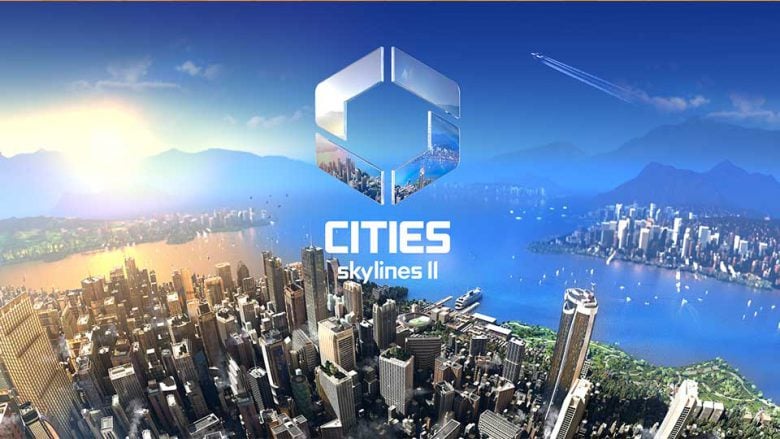Zoning Tools
Cities: Skylines II introduces new zoning tools that allow players to shape their cities with precision. The familiar Fill, Marquee, and Paint tools are available for zoning. The Fill tool automatically fills continuous zoning cells with the selected zone type. The Marquee tool enables players to select a rectangular area of any size and fill it with the chosen zone type. The Paint tool allows for the creation of specific zoned areas by painting one cell at a time, offering detailed control over zoning.
De-zoning Simplified
De-zoning in Cities: Skylines II has been simplified. Instead of a separate tool, players can now de-zone any zone type by simply right-clicking while using any of the zoning tools. The Fill tool allows for the de-zoning of an entire continuous area, while the Marquee tool can de-zone any rectangular area. The Paint tool enables de-zoning cell-by-cell. Changing the zone type has also been streamlined, as it no longer requires de-zoning the previous zone type before adding the new one.
Architectural Themes
One exciting new feature of the zoning tools is the ability to choose architectural themes for your city. When starting a new city, players can select a theme that determines the visual style of the buildings, street markings, roadside props, and the appearance of service vehicles. With the zoning tool themes, players can zone buildings from both available architectural styles: North American and European. This allows for a mix of architectural designs, creating a unique and diverse cityscape.
Zone Types
Cities: Skylines II introduces a greater variety of zone types compared to its predecessor. Residential zone types have more than doubled, offering six different options to create more realistic and diverse cities. The familiar low density and high density housing zones are still available, but new residential zone types have been introduced. These include medium density row housing with wall-to-wall homes, medium density housing with apartment buildings, mixed housing with a combination of shops and apartments, and low rent housing with large apartment buildings suitable for low-income residents such as students and young adults.
Commercial Zones
Commercial zones in Cities: Skylines II feature low and high density buildings where a wide range of goods are sold, from groceries to clothing and entertainment options like restaurants and movie theaters. Commercial zones thrive near residential areas as they provide essential services and attract customers. The major difference between low and high density commercial buildings is their size and the volume of goods they can sell. Low density businesses typically consist of boutiques, small stores, and bars, while high density businesses include supermarkets, department stores, and recreational locations like theaters and hotels.
Industrial Zones
Industrial zones in Cities: Skylines II are divided into manufacturing companies and warehouses. Manufacturing encompasses factories and workshops, while warehouses store produced goods awaiting transportation or suitable buyers. Industrial zones produce goods from materials either imported or locally extracted and processed. The local market is the primary target for sales, as transportation costs are lower, resulting in higher profits. Overproduction leads to excess goods being shipped to Outside Connections, simulating market saturation. Companies adjust their operations to match market needs and ensure profitability.
Office Zones
Office zones in Cities: Skylines II include low density offices with small office buildings and high density offices with glass-walled skyscrapers and towers. Offices provide immaterial goods and services for private citizens and companies. They convert manufactured technological goods into software and further into other immaterial goods like telecom, finance, and media. Office companies range from banks and law firms to telecommunications and electronics retailers. Software plays a crucial role in the production of various goods, benefiting both the industrial and office sectors.
Zone Suitability
Each zone type in Cities: Skylines II has a Zone Suitability infoview that provides pertinent information when zoning. For example, zoning a commercial area displays information about the potential customer base in that area, while zoning a residential area highlights ground pollution to avoid when zoning. The Zone Suitability infoview helps players make informed decisions about suitable locations for different zone types.
Zone Demand
City growth in Cities: Skylines II depends on the demand for different zone types and the symbiotic relationship between them. New citizens moving into the city increase the demand for residential zones. As industrial manufacturing grows, there is a greater need for commercial zones to sell the produced goods. The establishment of more companies increases demand for residential housing as more job positions become available. Adjusting taxes and providing favorable conditions for different goods and products can affect local demand and stimulate city growth.
Land Value and Building Levels
Land Value in Cities: Skylines II reflects the desirability of locations for citizens and companies. It spreads through roads, gradually increasing the value of the surrounding area. Citizens prefer locations with large homes, proximity to shops, schools, workplaces, and low pollution levels. Meeting these needs increases Land Value, and residents who can afford higher rent contribute to the area’s desirability. Conversely, high rent can lead to lower-income families moving out. Companies consider Land Value and transportation costs when choosing business locations.
Building Levels in Cities: Skylines II represent the progression of buildings from lower to higher quality. Higher-level buildings have increased upkeep costs and rent. Residential buildings offer more apartments in medium and high density housing as they level up, while commercial and manufacturing buildings become more efficient, decreasing resource consumption and producing goods faster. Building appearance also changes with each level, reflecting improved quality and modernity.
Signature Buildings
Signature buildings are a new feature in Cities: Skylines II. These unique, ploppable zoned buildings fall into residential, commercial, industrial, and office categories. Players can unlock them by meeting specific requirements such as reaching certain milestones, citizen happiness levels, and zoning cells with specific zone types. Signature buildings function similarly to regular zoned buildings, contributing to the city’s economic cycle. Each signature building has its own positive effects, ranging from local neighborhood improvements to city-wide benefits. They offer players new options to enhance their cities and provide unique visual elements.
Enhancing Transportation in Cities: Skylines II – A Detailed Overview of Public and Cargo Options
Platforms: Microsoft Windows, Xbox Series X|S, PlayStation 5






